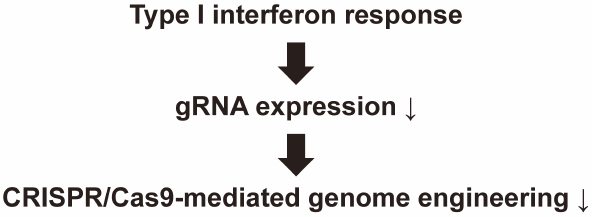- J-STAGE home
- /
- Biological and Pharmaceutical ...
- /
- Volume 40 (2017) Issue 3
- /
- Article overview
-
Mitsuhiro Machitani
Laboratory of Biochemistry and Molecular Biology, Graduate School of Pharmaceutical Sciences, Osaka University Institute for Frontier Life and Medical Sciences, Kyoto University
-
Fuminori Sakurai
Laboratory of Biochemistry and Molecular Biology, Graduate School of Pharmaceutical Sciences, Osaka University Laboratory of Regulatory Sciences for Oligonucleotide Therapeutics, Clinical Drug Development Unit, Graduate School of Pharmaceutical Sciences, Osaka University
-
Keisaku Wakabayashi
Laboratory of Biochemistry and Molecular Biology, Graduate School of Pharmaceutical Sciences, Osaka University
-
Kosuke Nakatani
Laboratory of Biochemistry and Molecular Biology, Graduate School of Pharmaceutical Sciences, Osaka University
-
Kazuo Takayama
Laboratory of Biochemistry and Molecular Biology, Graduate School of Pharmaceutical Sciences, Osaka University The Keihanshin Consortium for Fostering the Next Generation of Global Leaders in Research (K-CONNEX), Kyoto University Laboratory of Hepatocyte Regulation, National Institutes of Biomedical Innovation, Health and Nutrition
-
Masashi Tachibana
Laboratory of Biochemistry and Molecular Biology, Graduate School of Pharmaceutical Sciences, Osaka University
-
Hiroyuki Mizuguchi
Corresponding author
Laboratory of Biochemistry and Molecular Biology, Graduate School of Pharmaceutical Sciences, Osaka University Laboratory of Hepatocyte Regulation, National Institutes of Biomedical Innovation, Health and Nutrition iPS Cell-Based Research Project on Hepatic Toxicity and Metabolism, Graduate School of Pharmaceutical Sciences, Osaka University Global Center for Advanced Medical Engineering and Informatics, Osaka University Graduate School of Medicine, Osaka University
Supplementary material
2017 Volume 40 Issue 3 Pages 272-277
- Published: March 01, 2017 Received: August 31, 2016 Released on J-STAGE: March 01, 2017 Accepted: December 24, 2016 Advance online publication: - Revised: -
(compatible with EndNote, Reference Manager, ProCite, RefWorks)
(compatible with BibDesk, LaTeX)


